We see the main focus of the ITM program as training students in trauma-informed care. We believe the best way to do this is to engage in our own healing process. In this section, credible messengers are recognized as and referred to as healers.
We take the restorative practices framework and combine it with lesson plans we adapted from research done by psychologists Kenneth Hardy and Tracey Laszloffy. We believe trauma can lead to violence. We see by engaging healers in their own healing process we, in turn, are helping mentees heal from past trauma. When mentees heal we reduce violence, recidivism, and improve quality of life for the young people we serve.
These core concepts of Devaluation, Erosion of Community, Dehumanized loss and Rage are first introduced in the course as tools for participants to better understand themselves and their experiences. These same concepts are then used by credible messenger mentors in working with others.
The most extreme human abnormality we believe is violence. “Violence involves a willful action (or inaction) that results in the intentional infliction of harm or injury” (Kenneth V. Hardy). When human behavior produces violence to ourselves or others, we have lost our humanity. We see violence as permeating our society – poverty, war, genocide, slavery, mass incarceration, suicide, racism, sexism, ableism, homophobia are all acts of violence. These forms of violence harm not only our bodies but also our emotional and psychological well-being. Given, that most Credible Messengers are from impoverished backgrounds, are people of color and have been incarcerated, they have likely experienced multiple forms of violence and thus trauma. Following psychologists and authors of Teens Who Hurt, Kenneth V. Hardy and Tracey A. Laszloffy, we examine factors that lead people to violence.
In Teens Who Hurt, Hardy and Laszloffy identify four aggravating factors contributing to violent behavior: Devaluation; Erosion of Community; Dehumanized Loss and; Rage. Devaluation occurs when an individual or group’s dignity and worth are assaulted or denigrated. Erosion of community occurs when someone has no place where they feel they can belong or feel connected to others in a meaningful way and nowhere that they feel safe and secure. Dehumanized loss occurs when a person has unacknowledged, unmourned and thus unhealed loss. Rage isn’t just violent expressions of anger; rage is a normal human response to feelings of injustice, and the better our understanding is of rage, the better we are equipped to reduce acts of violence.
Devaluation Story by Divine Allah
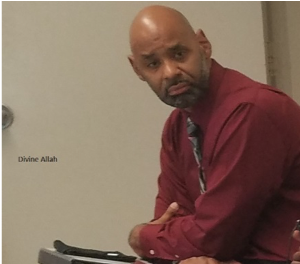
Devaluation is the process that strips a person or group of dignity and a sense of worth. As a formally incarcerated person I experienced devaluation in the New York State prison system. I can recall being devalued when I first got to downstate. The Correction Officers (CO’s) screamed into my face, required me to strip and pose for cavity search, and then I was forced to shave all my hair off. It was an all-time low for me. I was robbed of any dignity I had all because I made bad choices and the time had come to pay for my mistakes. While in prison, I was degraded, humiliated and belittled regularly by the CO’s. They acted as if I was not a human being. It was as if I was there for their entertainment and to be abused, instead of rehabilitation as the state claims. Towards the end of my bid, I gathered the strength to not allow myself to be beat down mentally anymore. I had parole to look forward to and no CO was going to get in the way of my freedom. I was also devalued by other men in prison. Prison fosters an environment where the incarcerated men hate to see others succeed. They want to degrade and minimize any positive growth or change.
Erosion of Community
Community can be defined in many ways. We believe community is where people feel a sense of belonging and connection with others in a special way. It is where people learn who they are and develop a sense of identity, their place in the world. Somewhere people feel safe and comforted. A strong community teaches people how to care for others and negotiate complex human relationships. A strong sense of community can buffer one from devaluation. Those with disabilities may not easily have access to community to buffer the devaluation they experience whereas able-bodied people of color can come together and feel pride and positive affirmation. To be alienated from community, is to be alienated from one’s humanity. How does this alienation happen?
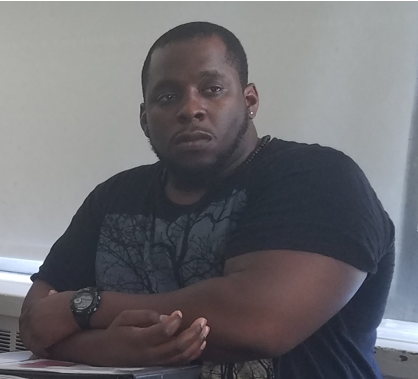
“My mother died when I was only 18 months old. So I moved in with my foster parents from ages 1 ½ to 6. Life was enjoyable. Issues began when it was decided that I would move to the Bronx and live with my Aunt and Uncle. I can’t say that things were terrible every day but when the beatings began, it became the most dreaded place to be. I resided with them from ages 6-11. I would visit my foster parents often and would stay there a few weeks out of the summer I felt good to avert the abuse for however long. School was my place to release my aggression and I ended up being expelled due to continuous fighting.”
-Carlton Smith
Community can be divided into three levels, primary community, extended community and cultural community. Disruption in any of these can cause trauma. Your primary community is generally understood as your immediate family: guardians, parents, siblings. When parents physically and sexually abuse their children, it is a devastating form of abuse because it disrupts the primary community of family and increases the likelihood of violence. Neglecting children can also cause such disruption of primary community. Divorce, separation and death can also disrupt a child’s primary community.
One’s extended community includes one’s neighborhood or town, schools, houses of worship, community centers, etc. Disruption of ones extended community can occur because of harsh economic conditions, poor schools, war, mass violence, natural disasters, bullying and social ostracism.
One’s cultural community can be disrupted by racism, sexism, classism, ableism, homophobia, islamophobia etc. It is critical that all these levels of community and any potential disruptions be understood by healers in order to effectively work with our mentees.
Dehumanization of Loss
Unacknowledged, unmourned, unhealed loss is the third aggravating factor for violence. When people do not mourn their losses, they lose a part of their humanity. Loss can be understood both as tangible loss and intangible loss. Tangible loss is generally understood as the loss of something or someone physical. Intangible loss includes loss of respect, dignity, hope, voice/agency, etc.
One should examine and explore what types of losses your mentees suffers from. Common losses that are important to be aware of include loss of a hero. Losing someone you idealize either because of death or shame cannot be minimized; it can be a critical aspect of one’s sense of community.
Loss of a romantic partner can significantly impact adults and its need to be taken even more seriously with adolescents. Remember it can be their first experience in loving someone outside of their immediate family.
Divorce even when done with the child’s needs recognized can still create a sense of loss. It is critical to allow the child to mourn the loss of the family they once knew.
Death has a finality which comes with much loss. A funeral may not be sufficient, especially for a child to mourn a loved-one’s death.
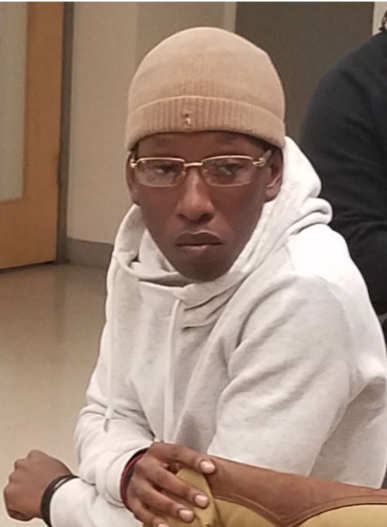
“I was born and raised in NYC. I grew up always wanting to be a Pediatric Specialist. The son of a livery driver and a nurse, I spent my early childhood in Harlem and the Bronx. At 8, my parents split up and I moved to Florida with my mother. Then, in 2003, I lost everything. My father died in August, from complications of HIV. My mother died a few months later in October of breast cancer. I had nowhere to go, so I moved in with my brother who had been living in the shelter system in the Bronx. Eventually, I located an uncle who would take me in, but the new living situation wasn’t supportive. Living in a single apartment with a group of livery drivers, all men older than forty, all immigrants from Africa, I had no supervision.
I was still depressed about my parents. And when I started high school, it was a new world for me. I took my friends more closely than my family. They became my brothers. That’s what I was looking for. I was craving human connections.” – Zaron Samassi
Neglect also causes feelings of loss that go unacknowledged.
Loss of physical safety is common for youth in urban areas damaged by poverty and violence. Sometimes a house-fire or burglary can cause a loss of physical safety among children and adolescents.
Other forms of loss to notice include loss created by moving, loss of friendship, and loss of economic security. It is also important to note that losing physical abilities can be particularly devastating, especially if a person got most of their positive affirmation from the now diminished or absent ability.
Rage
Rage is something we all have come to fear. Rage is often seen as synonymous with violence. While suppressed anger can be the cause of rage, suppression of rage is what actually leads to violence. Rage is experienced when one feels great injustice and seeks revenge as an act of justice for the original harm. Rage is a righteous emotion. Anger is immediate, rage builds over time with devaluation, disruption of community, and dehumanization of loss. It is easy to identify explosive, externally directed rage which is evident through yelling, breaking things, and physical violence. Silent, externally directed rage may require longer to identify as it requires more trust and relationship development, allowing for the free expression of violent ideation. Pay closer attention to loners or social outcasts as they experience devaluation and erosion of community, it may be critical to find pathways to re-channel their rage. Silent internally directed rage can be seen by bruises, cuts and often other physical markers on the body, which is more common among girls and women. Girls are told to suppress rage or any expression of anger at all. Boys are encouraged to express rage while simultaneously told it is bad. While women attempt suicide more often, more men commit suicide (American Foundation of Suicide Prevention). Suicide is a form of violence that our society has yet to adequately address and as healers we must recognize the early signs of self-harm.
Rage is a defense against vulnerable emotions such as grief, shame and fear. As healers we cannot be afraid of rage. Of course we need to ensure our own physical safety as well as that of others working with us. There are basic steps we can take to minimize risk. Allow mentees to feel entitled to their rage. If we can safely allow the expression of rage, then we can get into the deeper issues affecting the mentee. Tapping into these vulnerable feelings may incite more rage initially. It is critical to stay calm, show understanding and allow the client to express their rage. Once one starts tapping into the deeper issues hidden underneath the rage, which inevitably reveals feelings of devaluation, erosion of community and dehumanized loss. When the mentee starts to recognize the origins of their rage, we healers must use this opportunity to introduce pro-social activities that can re-channel rage such as sports, hobbies, music, social activism, etc.
Historical Trauma
In this section we examine some of the policies and practices that are used to discriminate against and assault African-Americans and other marginalized groups. Our focus is specifically on state violence or state-sanctioned violence against marginalized peoples. From chattel slavery to its modern day equivalents, we examine the ideological factors required to create and enforce oppression. We then come to our modern prison system and explore its relationship to chattel slavery.
As we explore violence we look at our history:
America was built on the deaths of Africans and Indigenous peoples. It is estimated that the violence of slavery caused tens of millions of African deaths. While the numbers vary based on different historical research, Africans were a critical piece in building American wealth. Africans provided the labor necessary to build this new country. Indigenous peoples had to be removed from their lands to make way for the new European settlers. Indigenous populations were wiped out of the Americas with estimates ranging from 80-100 million native deaths. Genocide was the tool that built America. War, displacement, disease, the slaughter of indigenous peoples and the destruction of their societies opened up the land for settlement and exploitation of resources.
Violence has remained a critical component of American culture. Violence pollutes all aspects of our society. The first American 12-reel film- Birth of a Nation by D.W. Griffith- depicts enslaved Africans as barbaric, stupid and sexually aggressive towards white women. These stereotypes still are present in the American psyche today and have influenced the stereotypes of African Americans and been used to justify their continual enslavement. It is precisely the criminalization of people of color that provides the justification for incarceration, enslavement and genocide. American culture glorifies violence in video games, television, music, sports, magazines, literature and in our history books.
We look at lynching, where public displays of dead black and brown bodies were normal during Jim Crow. During this period, attending a lynching was considered entertainment like going to see a baseball game. Then we look at the Milgram and Zimbardo experiments to understand how “normal” people are encouraged to be violent and abusive to others. We also examine the social factors that lead to such behavior.
Understanding how other groups have been marginalized and oppressed is critical to understanding societal devaluation and how these systems conspire to hurt and divide us. We look at the similarities and differences in how Chinese, Japanese, Mexicans and women of all ethnicities have been “othered” and abused. We challenge healers to think about the relationship between state violence and domestic violence. We look at how we as a society are complicit in mass violence.
Finally, we explore contemporary social movements. We look at income inequality and how it relates to racism, sexism, classism, ableism and environmental injustice. We challenge healers to think about justice: what it means to create social change and discuss – what are the most effective ways for us to heal our society from injustice, because injustice is violence.
Critical Thinking Classroom Exercises:
Transatlantic Slave Trade
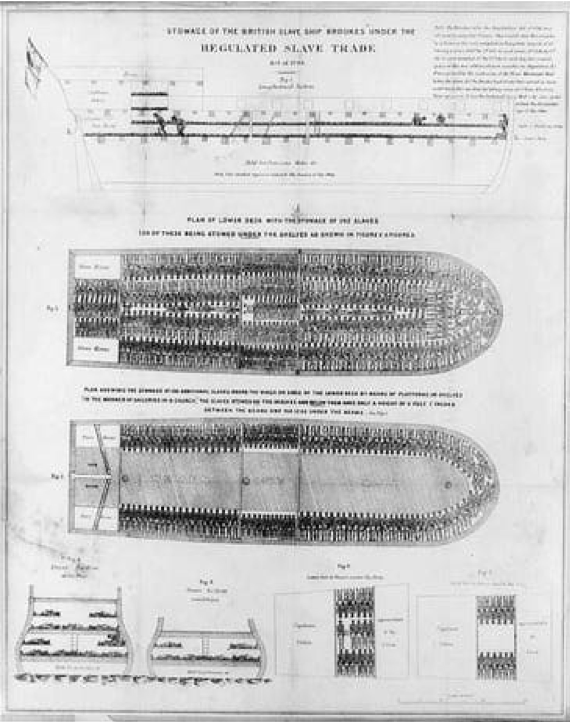
Pass around the circle the image below in silence until it returns to the Circle Keeper. Pass around the image again and read the following:
Read: These plans of the slave ship Brookes, packed with 454 slaves were made in 1789 by Thomas Clarkson, one of the leaders of the abolitionists for a report to Parliament. The pictures were printed onto 7,000 posters of the ship and published all over Britain.
The Brookes actually carried 740 slaves on one voyage. This had been done by locking them ‘spoonwise’ (that is sitting in lines between each other’s knees). Another common way to ‘tight pack’ slaves was by making them lie on their sides, not on their backs.
After the Regulation Act of 1788, the Brookes was allowed to carry only 454 slaves, which gave a space of 6 ft. by 1 ft. 4 in. to each man; 5 ft. 10 in. by 1 ft. 4 in. to each woman, and 5 ft. by 1 ft. 2 in. to each boy. The Brookes was 100 ft. long and 25 ft. wide, giving it deck-space of c. 3,000 sq. ft.
Riding a Slave Ship
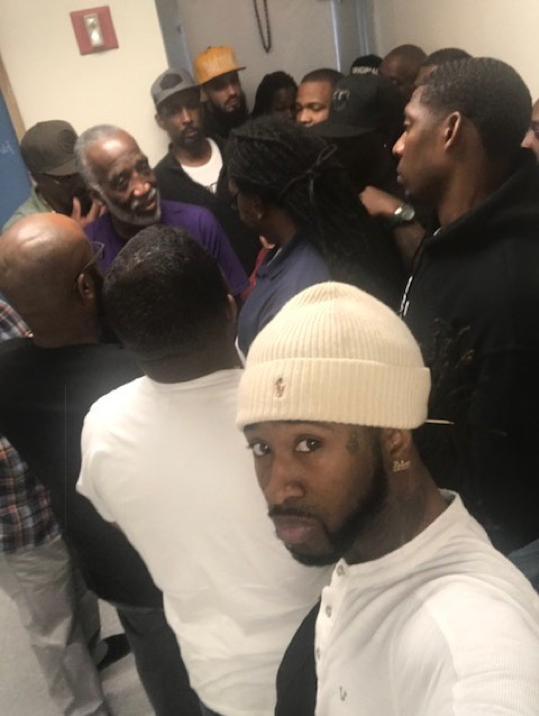
Ask the Circle to lie down in their space of 5ft x 1ft 2in, similar to the proportions of the Brookes ship with 454 Africans on board (Circle keeper will provide rugs/blankets, or mats. If comfortable, also try Circle to lay in that space next to each other “spooning”).
Alternative Standing directions: stand within space of 2ft. by 2ft. per person in the Circle. It is proportional to the space on the Brookes ship carrying 740 Africans.
Mark the perimeter with pieces of paper/cardboard sized 2’ by 2’, per person. Place them next to each other, and ask circle to fit within that space.
Remind the Circle that people were also chained while eating, urinating and defecating in the same place. It is estimated one out of every five Africans died in the transit (the Middle Passage).
Circle Keeper Script:
“How would you feel if you had to stay like this for 6 weeks?”
Pass the talking piece to the left.
Lynching during Jim Crow
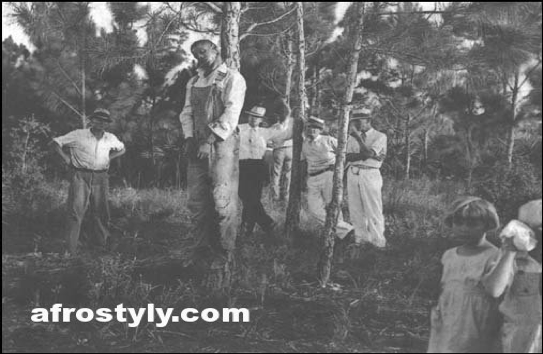
- Pass around the Circle images of Lynching that took place during the Jim Crow Era.
- Once they have gone around once, ask the Circle to describe what they see in the images and postcards.
- Why do you think these white people in these pictures saw public lynching as an acceptable activity?
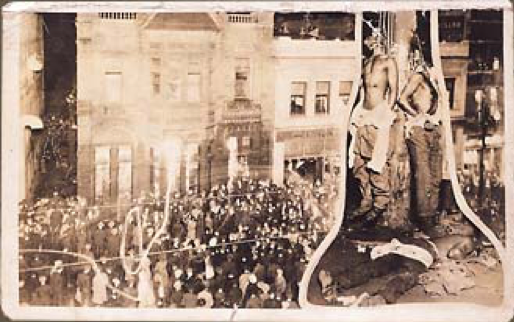
Pass the talking piece to the left.
Power of Images
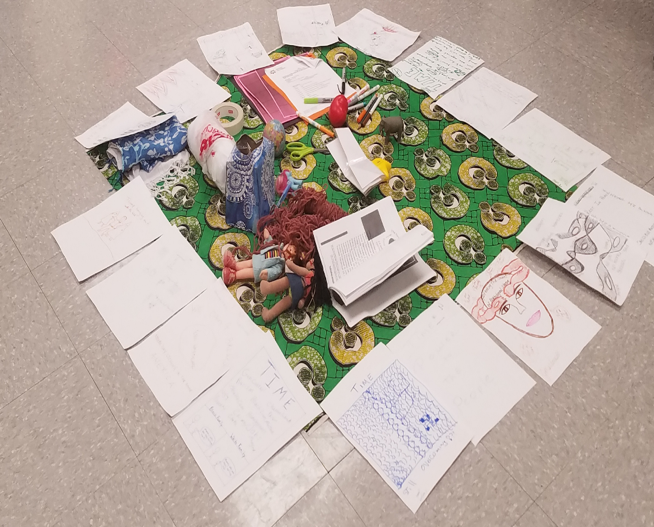
Ask the Circle to roughly sketch an image they would want on the cover of Time magazine today. They should consider the following questions as they develop their image:
What issue do I think is important for people to see?
How do I want to influence people who view the image?
Why do you think this image will impact on society?
Share your image with the Circle.
From Slavery to Mass Incarceration
Show the film, “The Farm, Angola State Prison” (15 minutes, edited)
Discussion questions:
- Is the U.S. prison system modern slavery?
- Why is “hope” important for the Warden of Angola State prison?
- Does anyone have stories to share about working while in prison?
- Has anyone been assaulted or abused while in prison?
- How would you reform prisons?
Violence Against Women
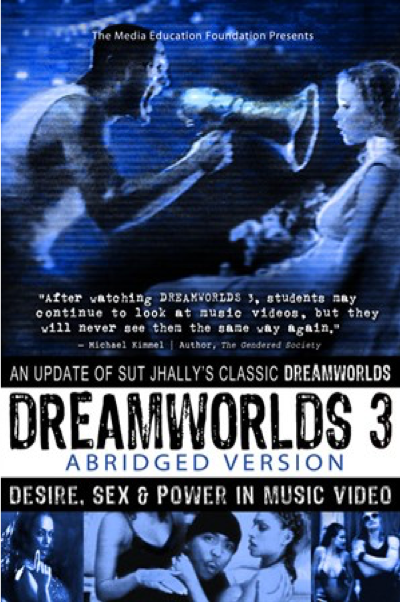
Show the documentary: Dreamworlds III documentary (1 hour)
Discussion questions:
- Are women oversexualized by the music industry?
- Do you think there are similarities between Snoop saying, he needs to “break a bitch-in” and white slave holders saying they needed to “break-in their slaves”? (muzzle photo)
- Why do you think men would want to throw salami at a woman’s butt? Would you like it if someone threw salami at your bare butt?
- Why do women in music videos seem to always like the abuse they experience in music videos?
Pass the talking piece to the left.
Income Inequality
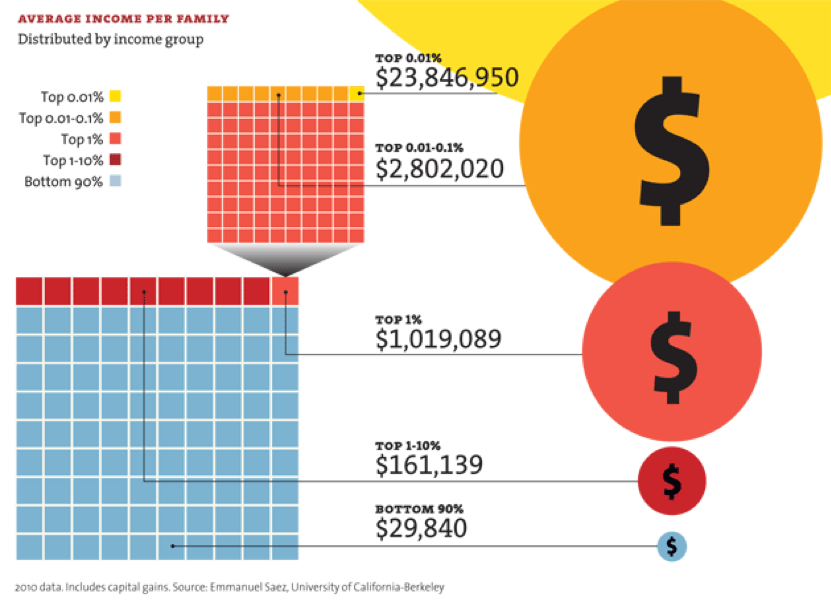
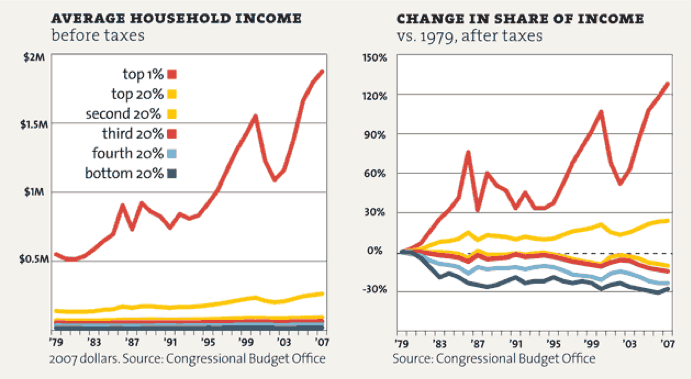
Discussion questions:
- Do you think it is fair that some people make $24 million a year while 90 % of Americans only earn less than $30,000 a year?
- What stands out to you in these charts?
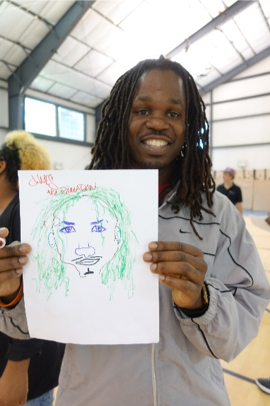
“My name is James Barnwell. I live in the South Bronx. We have some of the highest rates of asthma in the City. It is the leading cause of school absences for elementary school-aged students. I propose the city plant 1000 new trees in my district to improve the quality of air given the high rate of asthma in my district. I would also start a program to educate young adults about recycling and environmental stewardship. I would also propose new fines against the sanitation department for inconsistencies in the garbage pick-up in my district. I would take the revenue collected from these fines and put it back to the youth Environmental Stewardship program. I would organize my community, march in the streets and collect petitions to place pressure and get the support of local elected officials including the City Council, Borough President and State legislators.”
